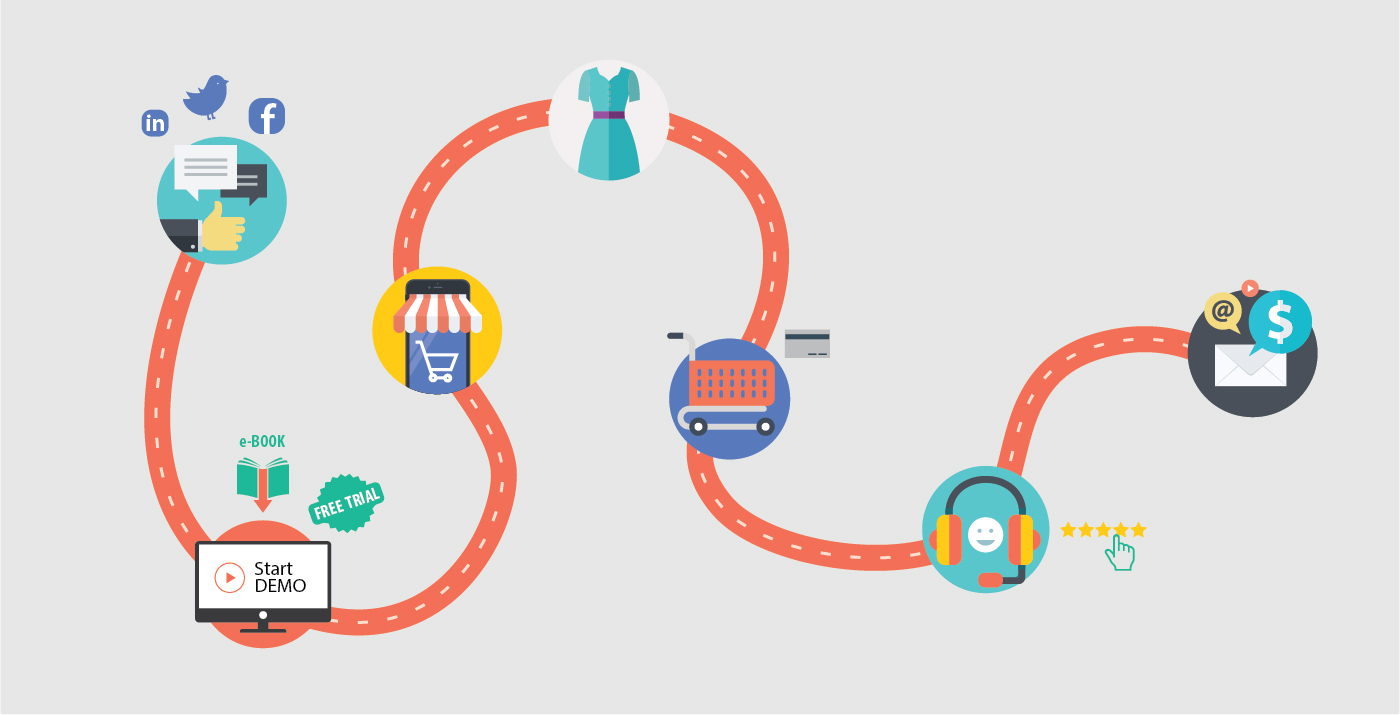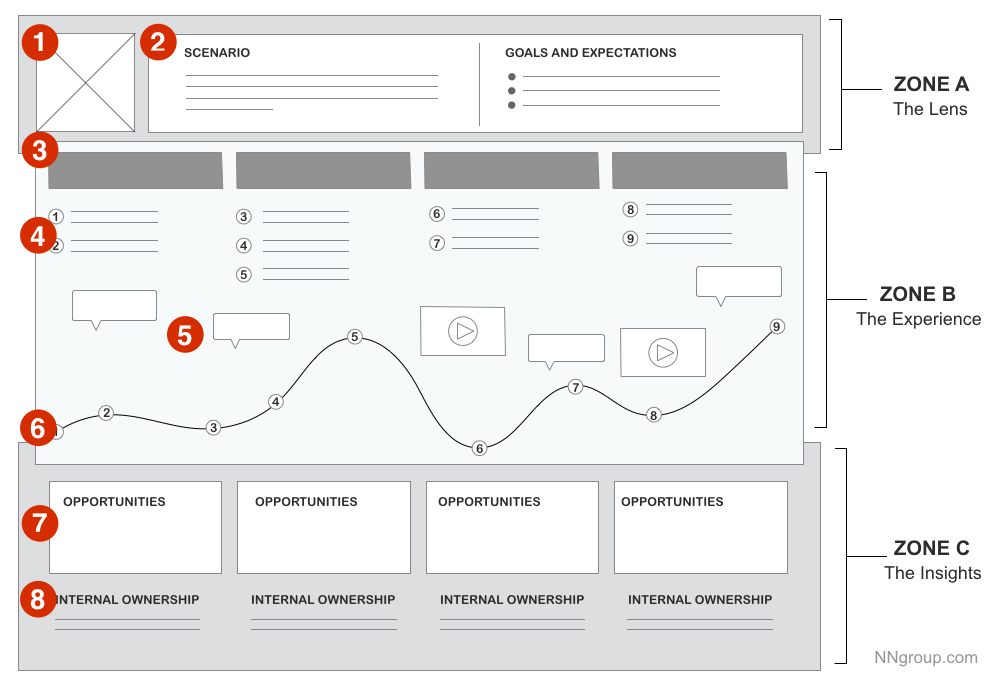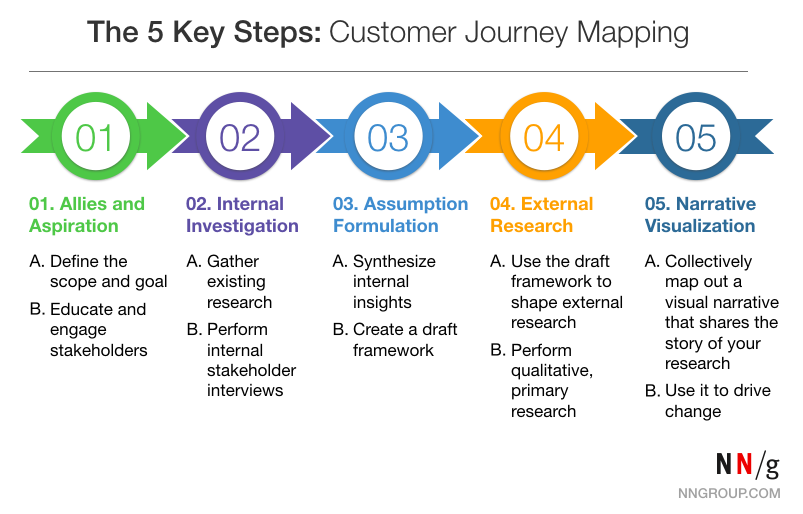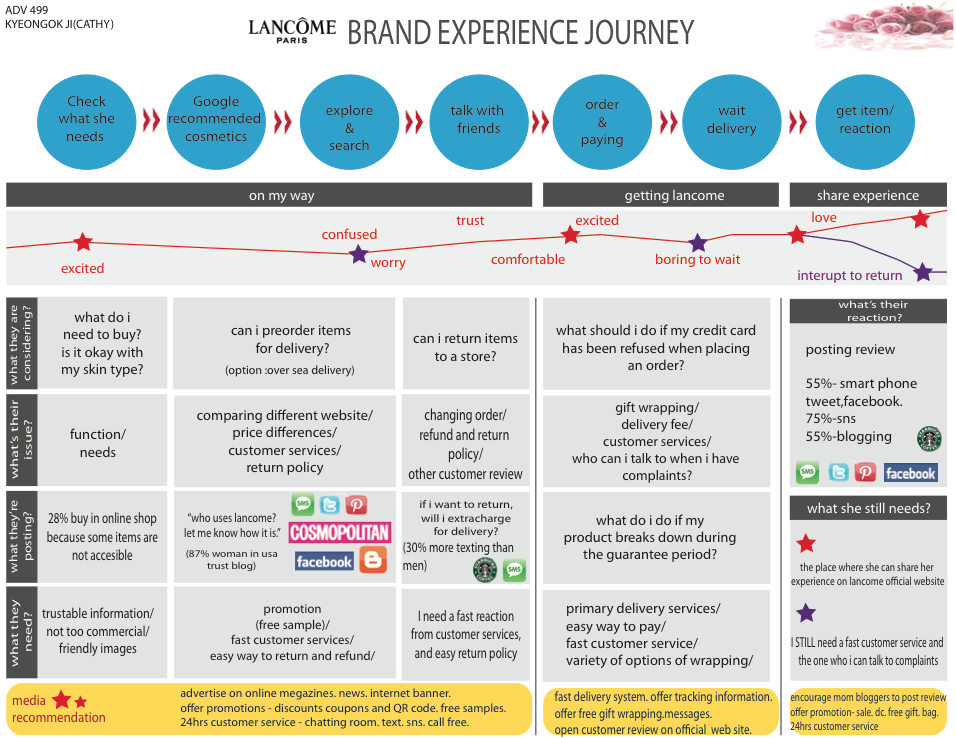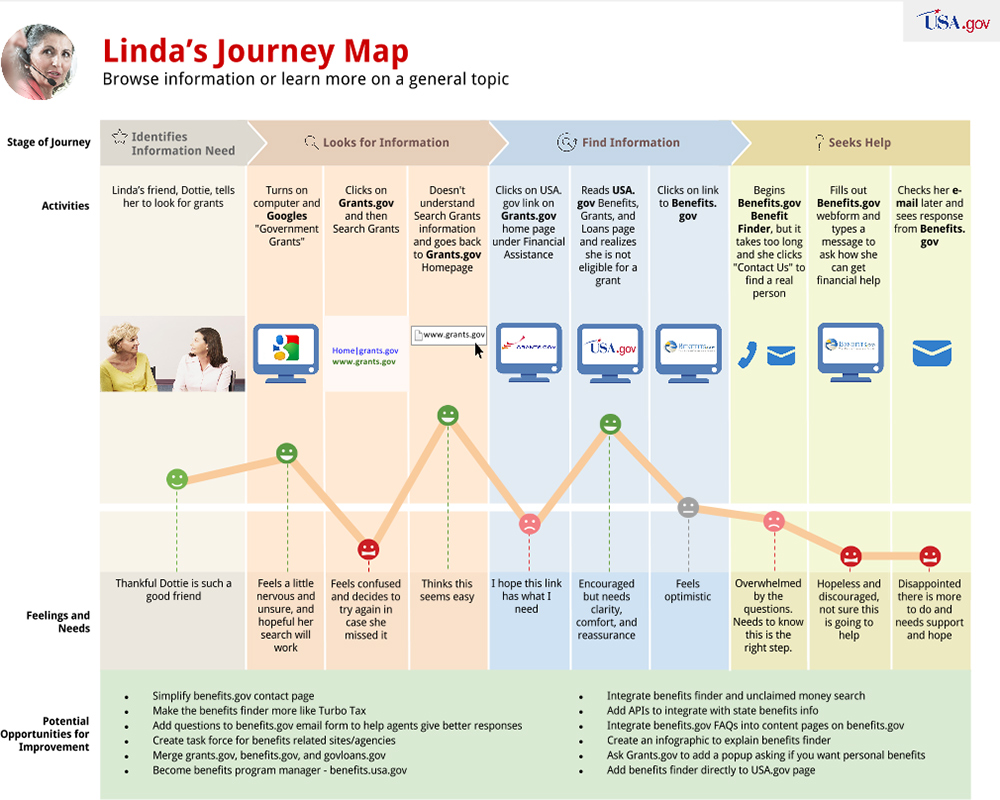The companies that focus on maximizing satisfaction, with regard to the entire customer journey, are more likely to increase customer satisfaction, loyalty and advocacy among their customers than companies that focus on parts of the business in a segmented way. In order to improve customer satisfaction, focus should be on the whole customer experience. Customers value the ability to be in constant and effective contact with a company through multiple avenues at the same time. An emerging tool to help focus on the customer experience is a customer journey map. Journey maps can help to understand and visualize needs and frustrations that a customer goes through when interacting before, during and after with a company. This article explains the steps and the process of how to create a journey map.
What is a Journey Map?
(Fig. 1 – User Journey Map of London Cycle Hire)
A customer journey map is a visualization of the process that a person goes through in order to accomplish a goal. It’s used for understanding and addressing customer needs and pain points. – Kate Kaplan
In a simple way, journey mapping starts by creating a timeline with a series of customer needs and actions. Then, the actions and needs are fleshed out with customer’s thoughts and emotions at every step of the journey. Finally, the customer journey is represented in a visualization which creates a narrative used to communicate insight that will inform processes and decisions in the organization.
Journey mapping creates a holistic view of customer experience, and it’s this process of bringing together and visualizing customer’s experiences at different moments and the ways they engage with a company that stakeholders can start a collaborative conversation and change.
Key Elements of a Customer Journey Map
(Fig. 2 – Deconstruction of a Journey Map)
There are a variety forms of journey maps which vary depending on the business goals and type of organization. However, for a journey map to be effective it needs to have these key elements.
Zone A: The lens provides constraints for the map by assigning (1) a persona (“who”) and (2) the scenario to be examined (“what”).
Zone B: The main part of the map is the visualized experience, (3) phases of the journey. The (4) actions, (5) thoughts, and (6) emotional experience of the user has throughout the journey can be supplemented with quotes or videos from research.
Zone C: The output should vary based on the business goal the map supports, but it could describe the insights and pain points discovered, and the (7) opportunities to focus on going forward, as well as (8) internal ownership.
Steps of a Customer Journey Map
(Fig. 3 –The five key, high-level steps in the process of customer journey mapping can be scaled to your scope and timeline.)
One common frustration about the process of customer journey mapping is the lack of organization. Following these steps can help the process.
- Aspiration and allies: Defining the goal and educate and engage the participant departments of the organization.
- Internal investigation: Data. Gathering existing customer data and research that exists throughout the organization.
- Assumption formulation: Formulating a hypothesis of the current state of the journey and planning more customer research.
- External research: More data. Collecting new customer data to validate (or invalidate) the hypothesis journey map.
- Narrative visualization: Combining existing insights and new research to create a visual narrative that depicts the customer journey.
Examples of Journey Maps
(Fig. 4 – Brand Experience Journey Map of Lancome Paris)
(Fig. 5 – Journey Map of Linda USA.gov)
Conclusion
Journey maps are highly used in organizations that care about their customers. Journey maps help to understand and visualize needs and frustrations that a person goes through when interacting with an organization. Journey maps can be applied to any type of industry. It could be a product, service or retail. The goal of a journey mapping exercise is to reveal opportunities to address those customers’ frustrations and identify the gaps between touchpoints and channels along the customer journey with an organization. By mapping the customer’s experience, these problems could be identified and new strategies could be implemented in order to offer a better holistic experience to customers.
Sources
When and How to Create Customer Journey Maps –https://www.nngroup.com/articles/customer-journey-mapping/
The 5 Steps of Successful Customer Journey Mapping –https://www.nngroup.com/articles/customer-journey-mapping-process/
Journey Mapping in Real Life: A Survey of UX Practitioners –https://www.nngroup.com/articles/journey-mapping-ux-practitioners/
